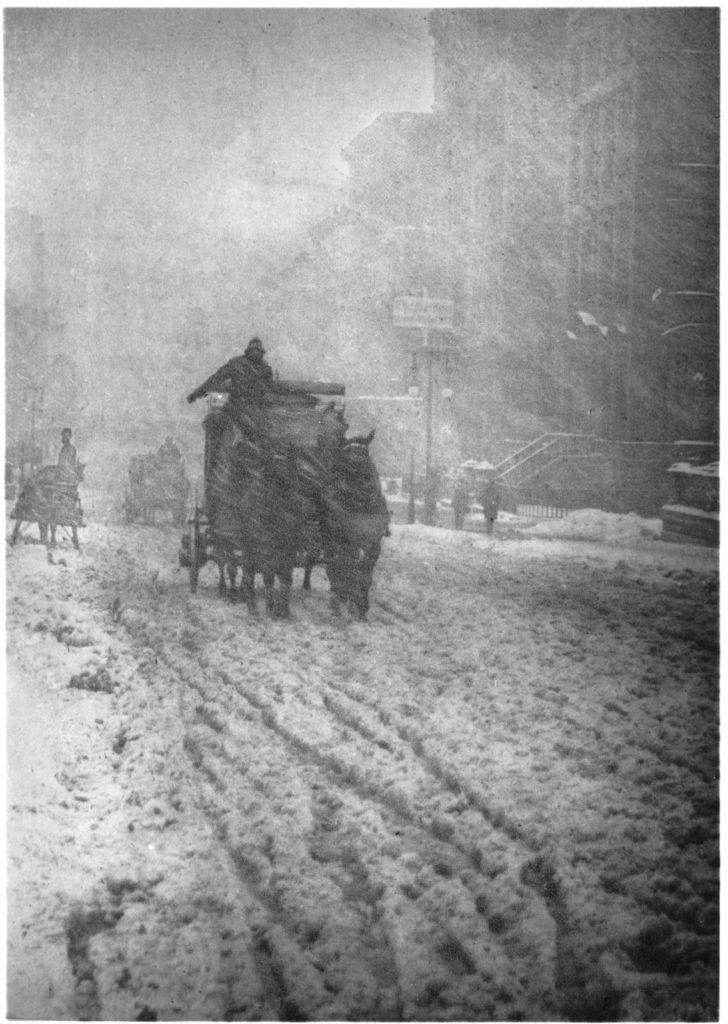PICTORIALISM
Time period: 1880-1920
Pictorialism is an internation style and movement originating in the 1880s and majorly influencing the work of photographers up until 1920s. Pictorialists were concerned with making art out of their images, rather than documenting what the camera would’ve picked up. They did this in an attempt to get society to recognise photography as a form of art.
The main convention of pictorialism was to transform photography into a hand-made process like the other arts. To achieve this they manipulated their images to resemble painting, with many images incorporating female figures as part of their composition. Methods used to alter images include: Scratching the negatives or painting chemicals onto the prints. Some also adjusted the focus of the scene or used a special lens to produce a softer image.

Alfred stieglitz was a primary founder of the movement and was determined over his fifty-year career in making photography an accepted art form.
Stieglitz focused on compositional effects and mastery of tone, often concentrating on natural effects such as snow and steam to create qualities similar to those of the Impressionists. His peers however, often focused on chemical processing of the images after their production.

REALISM / STRAIGHT PHOTOGRAPHY
Time period: 1915-1930s
This particular approach was created in response to pictorialism. The style rejected the soft focus and painterly essence of pictorialism and encouraging candid images of modern life. Photographers, such as Paul Strand, took advantage of the fact that the camera could capture shapes and forms sharply and in focus. They did not manipulate their images and faced reality head-on by having their images in full focus. Many focused on abstract for but some common characteristics of realist images include clean lines, sharp focus and repetition of form.
To acheive their desired outcome, realist photographers made sure their images represented the real world as accurately as possible, taking the image only once it was in sharp focus. Their final image is untouched; It isn’t manipulated through chemical processes and is an exact replica to what the photographer would have seen through the viewfinder.
Brett Weston
Brett Weston was the son of Edward Weston, who was renowned for his intuitive and sophisticated sense of abstraction. He engaged in ‘layered space’, an artistic style more often seen among the abstract expressionists and other modern painters.
During his career, Brett had even influenced his father. He had introduced semigloss gelatin silver paper into the Weston studio, a material fundamental to the sharp focus demanded by the new style with which Edward had been experimenting.






